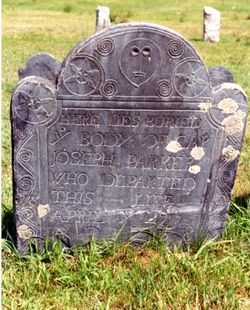Reading the Middlesex Resolves
The body chose a committee headed by Jonathan Williams Austin of Chelmsford to draft its response to Parliament’s recent Coercive Acts. Austin was a young lawyer, raised in Boston, educated at Harvard, and trained by John Adams.
At the end of that convention, the body voted 146 to 4 to adopt the Austin committee’s report offering nineteen resolutions. Here’s the preface, as printed in a broadside:
IT is evident to every attentive Mind, that this Province is in a very dangerous and alarming Situation. We are obliged to say, however painful it may be to us, that the Question now is, Whether by a Submission to some late Acts of the Parliament of Great Britain, we are contented to be the most abject Slaves, and entail that Slavery on Posterity after us, or by a manly, joint and virtuous Opposition assert & support our Freedom.The Middlesex County resolutions complained about three acts of Parliament: the Boston Port Bill, the Massachusetts Government Act (in detail), and the Administration of Justice Act. This convention said nothing about the revised Quartering Act or the Quebec Act, often grouped with those others.
There is a Mode of Conduct, which in our very critical Circumstances we wou’d wish to adopt, a Conduct, on the one Hand, never tamely submissive to Tyranny and Oppression, on the other, never degenerating into Rage, Passion and Confusion. This is a Spirit, which, we revere as we find it exhibited in former Ages, and will command Applause to latest Posterity.
The late Acts of Parliament pervade the whole System of Jurisprudence, by which Means, we think, the Fountains of Justice are fatally corrupted. Our Defence must therefore be immediate in Proportion to the Suddenness of the Attack, and vigorous in Proportion to the Danger.
We must NOW exert ourselves, or all those Efforts, which for ten Years past, have brightened the Annals of this Country, will be totally frustrated. LIFE & DEATH, or what is more, FREEDOM & SLAVERY are in a peculiar Sense now before us, and the Choice and Success, under God, depend greatly upon ourselves. We are therefore bound, as struggling not only for ourselves, but future Generations, to express our Sentiments in the following Resolves; Sentiments, which we think, are founded in Truth and Justice, and therefore Sentiments we are determined to abide by.
Resolution 17 called out Samuel Danforth and Joseph Lee by name as “judges of the Inferior Court of Common Pleas for this county, [who] have accepted commissions under the new act by being sworn members of his Majesty’s Council.” It’s no surprise, therefore, that those two men were the first targets of the “Powder Alarm” two days after the convention ended. They indeed had enough warning to write out their resignations from the Council.
TOMORROW: A question of style.







